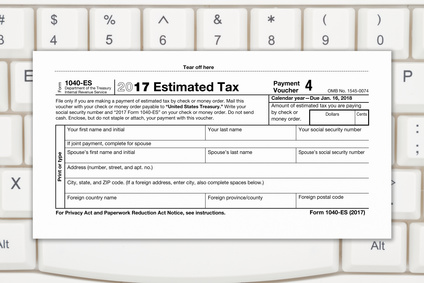
Table of Contents
Owing taxes could mean additional penalties and interest that could have a substantial impact on your financial condition. Most of the tax penalties are triggered by not paying what an individual owes, not filing a tax return, or not paying enough tax to the IRS throughout the year.
In this blog post, we cover the basics of underpayment penalties and interests imposed by the IRS and how to save yourself from the additional financial burden. Read on.
Understanding Underpayment Penalty
The taxes in the U.S. are collected on the pay-as-you-earn system and the amount is deducted from paychecks of most of the individuals. The IRS, however, wants estimated quarterly payments from taxpayers if:
- The employer does not withhold taxes from paycheck
- The withholding amount does not cover the entire income of the taxpayer
- The taxpayer is an independent contractor
An underpayment penalty is imposed if the individual fails to make an estimated tax payments during the year or the amount withheld from other income is less than 90 percent of the total tax to be paid to the IRS.
Calculating Underpayment Penalty
The IRS calculates the tax amount that an individual should have paid in every quarter and applies a percentage to derive total penalty amount for every quarter. There are, however, a few exceptions where the IRS will not impose a penalty of the taxpayer. These are:
- The total withholding and estimated quarterly tax payments were almost same as the previous-year tax
- The taxpayer had no liability last year and was a resident alien or U.S. citizen for the entire year
- 90 percent of the current year’s tax is already withheld from the paycheck of the taxpayer
- The amount owed is more than the withholding but not over $1,000
- There is no withholding tax and the tax amount for previous year is less than $1,000
Don’t Let IRS Tax Problems Keep You Up at Night
Speak with an experienced tax attorney and take the first step toward peace of mind.
Ways to Reduce or Do Away With the Penalty
The taxpayer can file form 2210 to avoid or reduce the penalty, if:
- The estimated quarterly tax payments were timely and adequate
- A large part of the income was made later in the year
- A large part of the income was made earlier in the year (For example, you added a large overpayment from previous year’s return to the taxes in the current fiscal year)
- The filing status changed to or from married filing jointly
- A disaster or casualty occurred and it is unfair for the IRS to impose a penalty
- There is a reasonable cause because the taxpayer is retired or disabled
Final Words
If the taxpayer finds out that the taxes owed by the end of the year will be more than what is currently being withheld a new W-4 form should be filed. No penalty will be imposed if the full amount of taxes is withheld at the end of the year. If you want to learn more about the Underpayment Penalty or need help in settling an IRS tax debt issue, feel free to get in touch with The Law Offices of Nemeth & Flores. With experience of more than a decade and a half, we are helping businesses and individuals with diverse IRS tax debt problems. Call us at (972) 426-2553 or fill out the contact form and we will get in touch with you shortly.


